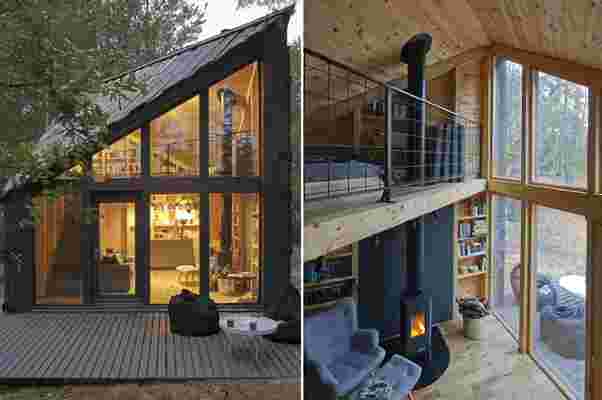
Libraries are one of my happy places so this cabin is straight out of my dream – a cozy personal library blended with a forest getaway! The Bookworm cabin is made for bibliophiles who want to enjoy the peace and quiet of nature while devouring stories by a fireplace. Designed by Polish duo Bartłomiej Kraciukand and Marta Puchalska-Kraciuk, this cabin is all about immersing yourself in your books and the woods which was their personal motive too!
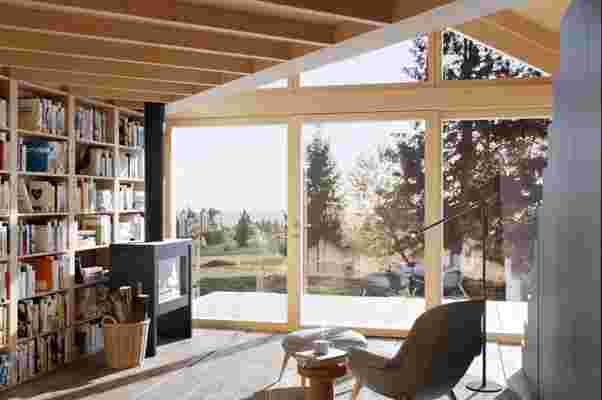
The angular 377-square-foot cabin is built on a wooded plot near the town of Mazovia which is just 31 miles outside Warsaw. The design and aesthetic were inspired by the surrounding lush forest and sand dunes.
Puchalska-Kraciuk is an architect who specializes in interior design with the firm Moszczyńska Puchalska in Warsaw and adapted the cabin’s concept from colleagues at POLE Architekci.
“I just loved staring at this landscape—but how long can you do that for? Maybe longer if you are indoors facing a big window, sitting on a comfy chair. Still, how long can you endure this? That’s when the idea to fill it with books came in. That way one can sit, stare, and have a reason for it—the reason being reading a book,” says Kraciuk.
She modified the original concept from POLE Architekci to transform it into a book lover’s dream escape. “We made minor changes to the colors, window arrangement, and some interior design, and the house was ready,” adds Kraciuk.
The fireplace, plush seating, and wooden interiors enhance the coziness and warmth – literally. It’s modern, minimal and keeps the focus on your reading list or the scenic outdoors thanks to its sweeping glass windows.
The Bookworm cabin has two levels – 269 square feet on the first floor and a 108-square-foot upper level which has is a sleeping loft. The compact structure uses space wisely, it has a full bathroom underneath the stairs, shelves filled with hundreds of books that line the interior, and a kitchenette that stands against the far wall. The dream is to take all my unread books and stay for half a year…minimum!
Designer: Bartłomiej Kraciukand and Marta Puchalska-Kraciuk
O14 – Building Skin is its Structure by Reiser & Umemoto
A new tower rises at the heart of Business Bay. O14 , a shining icon of cosmopolitan life where commerce and culture converge in an unprecedented new architecture. Rising above an exclusive site on the shore of Dubai Creek O14 is a tower formed around a new philosophy and space. The tower’s concrete shell not only is the structure of the building but also creates a lace-like faade open to light, air, and views. 21 stories of custom-designed office floors are carried without the barriers of conventional columns and walls. At ground level, exclusive shops link this site to Business Bay’s waterfront esplanade combining high-end shopping eminent culture and popular entertainment. Below grade, four levels of parking provide capacity for over 400 cars.
Architect: Reiser & Umemoto Via: Inhabitat

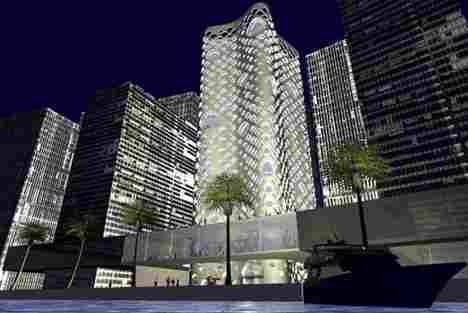
Built from repurposed roofing tiles, this exhibition space is inspired by natural cave dwellings and tree canopies!
H&P Architects created entire facades out of tile waste found on Vietnam’s streets for Ngói Space, wrapping the city building in curtains of terracotta tile to produce a distinct look that uses light and shadows to challenge conventional architecture’s sense of space and give the building a microclimate quality unique to its framework.
Architects have felt inspired by natural dwellings for as long they’ve been building their own. Taking cues from the area’s surrounding landscape and proximate building material, architects are better able to integrate nature and its organic structure into their designs. Vietnam-based architecture firm, H&P Architects, found inspiration in the natural canopies and stratification of banyan fig trees as well as the assorted and multilayered chambers found in caves for Ngói Space, a new exhibition center built from repurposed tile construction waste.
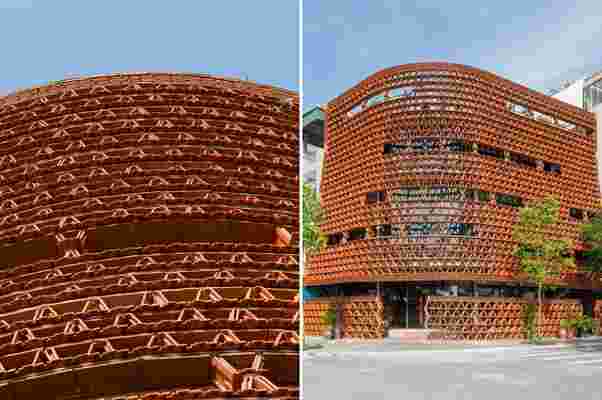
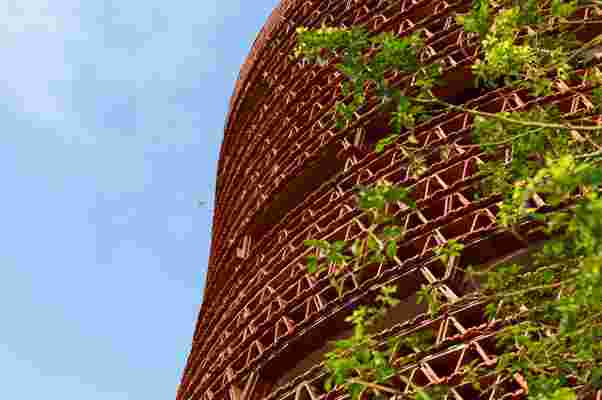
The tile that constructs Ngói Space is familiar to Vietnam’s cityscape as it is more commonly used on roofs throughout urban provinces. H&P Architects created entire facades out of tile waste found on Vietnam’s streets for Ngói Space, wrapping the city building in curtains of terracotta tile to produce a distinct look that uses light and shadows to challenge conventional architecture’s sense of space and give the building a microclimate quality unique to its framework. A country known for tilework architecture, Vietnam’s crumbling tiled buildings are often demolished with little regard to the construction waste produced from the tile.
While the tiles are familiar to the roofs and ceilings of Vietnam, H&P gave discarded tiles new life by using them to build facades. Offering new life to Vietnamese tilework architecture and the building material itself, H&P Architects constructed Ngói Space’s frame entirely from concrete and wrapped it up with 2,000 ‘viglacera dong anh tiles’ that created beveled facades. The building is formed from concrete casting and glass windows, which are wrapped in tilework facades to create a unique exterior display.
A roof provides an outdoor seating area for guests to enjoy their drinks or just lounge around under the sun. The multi-story building functions as a large communal space, with different activity offerings on each level. Moving through the cavern-like halls cast from concrete, sunlight filters through the crisscrosses of tiled facades to brighten the building’s industrial interior. On the first floor, guests can gather and enjoy coffee or tea either indoors or out on the terrace before moving to the upper levels where seminar and exhibition spaces fill each floor. Then, the roof provides a space for people to gather outdoors and enjoy the full breadth of sunlight.
Terraces throughout the building are able to stay cool thanks to the microclimate quality the tiles create. Speaking on the building’s repurposed tilework, H&P Architects note, “The Ngói space was created as an inspiring solution to reusing these memory-filled tiles. On a larger scale, it orientates users towards a sustainable tomorrow, from the perspective of reaching back to the past to recognize and rediscover the core and hidden values of the original space and use those values to create spaces of the future.”
Designer: H&P Architects
The building’s concrete interior takes inspiration from natural caves to bring warmth to an otherwise industrial setting.
The triangles formed from repurposed tilework provide plenty of views of the surrounding area.
Sunlight that filters through the tilework creates mesmerizing puzzles of light on the building’s ceilings and floors.
Interior walls are more tightly packed with tiles to provide a dense, fuller feel.
At night, the golden light that pours out from Ngói Space helps it shine like a lantern in the dark.








